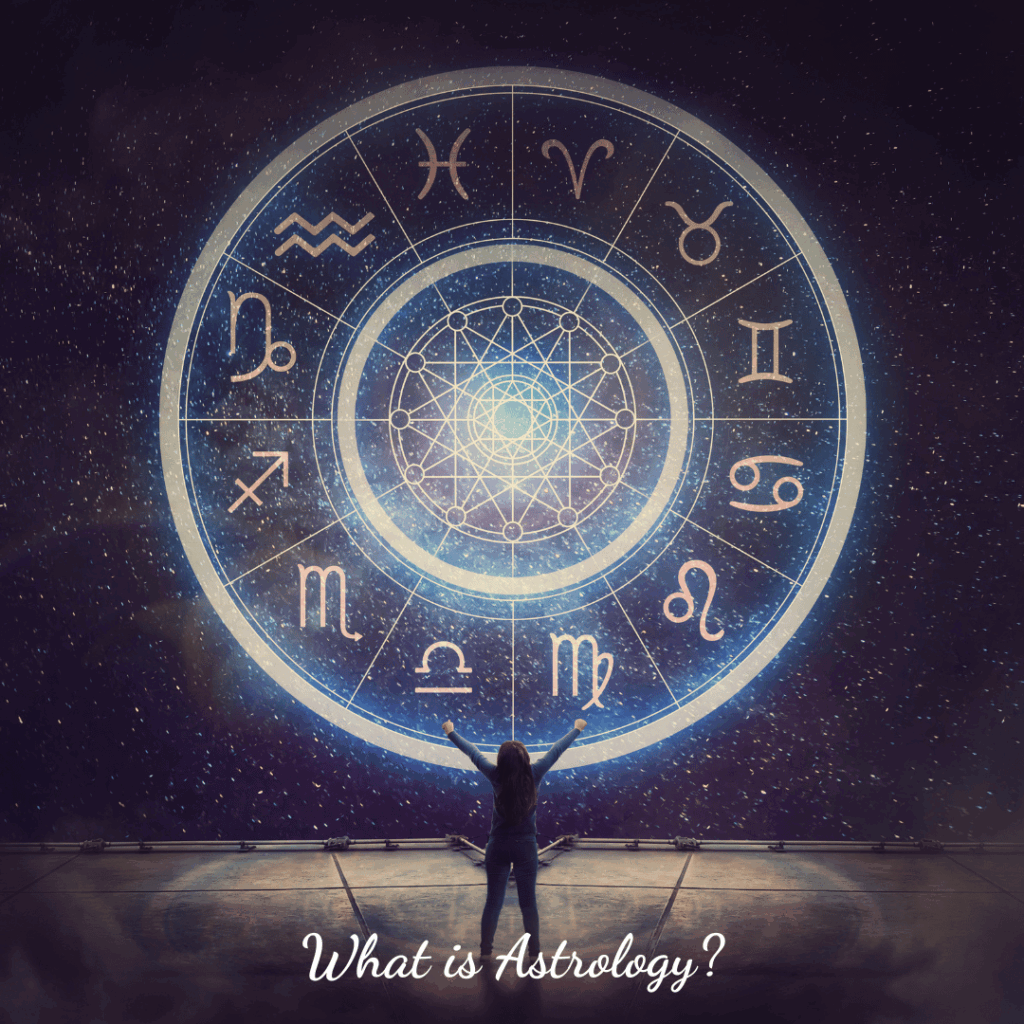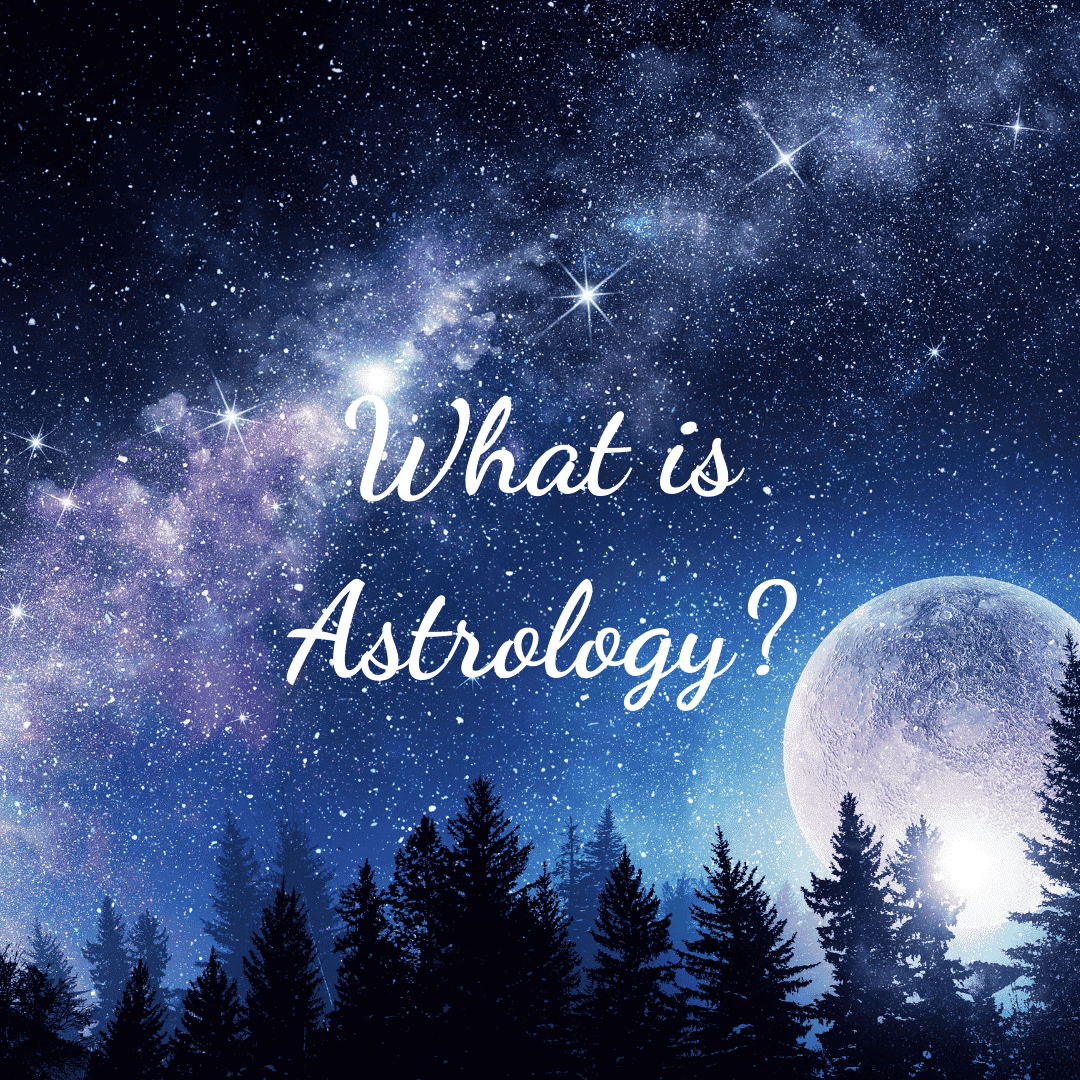Astrology, particularly in its modern Western form, is a captivating and complex subject that’s been experiencing a real revival in recent years. In fact, according to a recent YouGov survey, one in four Americans say they believe in Astrology!
We humans have always gazed up at the skies in bewildered awe.
Archaeological evidence such as cave-paintings suggest that over thousands of years, our ancestors have observed and recorded the planets. We’ve seen the waxing and waning of the Moon, witnessed the shift of the stars through the seasons.
We’ve asked big questions and sought meaning in the heavens. And we’ve wondered how these distant, celestial lights might reflect our lives down here on Earth.
If you’ve ever been curious about horoscopes, felt drawn to your zodiac sign, or wanted to understand what astrology really is you’re in the right place.
This is a guide for beginners. It will explore all the foundations of astrology. We will cover how it works, what it is, what it isn’t, and how it has evolved over time. Some areas will be touched on lightly, but there are links throughout the post to find more in-depth info on each topic.
We’ll also look at the key components astrologers use to interpret a birth chart and why astrology resonates with so many people today.
While a growing share of of US adults are religiously unaffiliated, there is one belief that appears to unite a significant share of them: astrology.
– Taylor Orth, Director of survey data, Yougov
So, What Is Astrology?
Astrology is tricky to define simply, mainly because it’s been around for so long, and meant different things to different groups at different times. For some, it’s a science; for others, it’s a symbolic language or a form of spiritual insight. Many treat it like psychology, some like a kind of divination, and others enjoy it as a way to explore identity and timing.
But, in essence, astrology is the study of the sky, or, to be specific, the study of the positions and movements of planets, stars, and other celestial bodies and the interpretation of how those changes and patterns relate to our lives here on Earth.
Astrologers look at how these patterns reflect events, personality traits, or life cycles. The general idea is that there is a meaningful connection between the cosmos and our human experience.
The idea is that the location of the planets can articulate facts about ourselves and give us clarity. We may be already somewhat aware of these facts, but astrology gives meaningful interpretations that often give people that ‘aha’ moment.
In natal astrology, for example (see more below), understanding your birth chart is like taking a short course on who you are and how others perceive you. Gaining this kind of self-knowledge increases your self-awareness. And the more self-aware you are, the easier it becomes to make decisions and life choices that support your growth instead of repeating patterns that hold you back.
So, fundamentally, it is about the meaning of life.
But it’s also important to be clear about what astrology isn’t. It’s not the same thing as astronomy, although it shares some observational roots.
It isn’t a form of magic or a system of religious belief. It’s also not a crystal-ball fortune-telling in the sense of being able to predict your exact future.
While it has borrowed from disciplines like mathematics, psychology, and alchemy over many centuries, real astrology remains its own unique tradition. It is not just a fun, pop-culture daily horoscope.
The Interconnected Worldview Behind Astrology
Astrology is all about interconnectedness and the belief that we live in a meaningful, symbolic universe where everything is part of a larger whole.
Astrology doesn’t assume the planets cause things to happen in your life but that their positions in the sky may reflect larger patterns at play. You can interpret what is going on because of the planetary locations, but the locations do not change anything. They just ‘are’. They offer an interpretive mirror for our lives.
The planets don’t actually make anything happen, but understanding them and their patterns helps us to gain a clearer picture of what is going on down here on Earth.
This way of seeing the world contrasts with the modern, mechanical view that treats the universe like a machine, separate from human experience.
In astrology, time and space aren’t neutral or empty, they contain ‘something’ that we can use. A type of quality. A single, particular moment in time holds a certain energy or a type of signature, and that moment can be reflected in a birth chart.
There’s an old phrase, ‘as above, so below’, that sums this up beautifully. The sky reflects the Earth. The macro mirrors the micro. You and your life are living out a cosmic play.
What’s the Point of Astrology?
People use astrology for lots of different reasons. Many are interested in self-discovery, and want to learn more about their personality, behaviors, values, or patterns, beyond what they see on the surface.
Others use it to understand timing so they can make decisions or get a fresh perspective during difficult life stages.
It won’t tell you what will happen, but it can give you an insight into who you are, what energies you’re working with, and what possibilities might unfold around you.
Many modern astrologers compare it to art, poetry, or music, the way that it helps us make meaning of our lives. It gives language to things we can already sense and it reminds us that our lives are part of something bigger, something ancient, mysterious, and shared across time.
The Different Branches of Astrology
Astrology isn’t just one single thing. Over time, different branches have developed, each with its own focus and techniques.
Here are a few of the main ones you might hear about:
Natal Astrology
This is what most people think of when they hear the word’ astrology.’ It’s based on your natal chart (also called a birth chart), which is a map of where the planets were in the sky at the exact moment and place you were born.
Only you were born in that precise place at that precise moment. Because of this, your natal chart is like a cosmic fingerprint, completely unique to you.
If you were born as a twin or part of a multiple birth, you would share a very similar cosmic blueprint with your sibling(s), with only slight variations depending on the exact time of birth. Even those small differences can shift how you each experience the same chart energies.
Your birth chart can offer deep insights into your personality, life path, strengths, challenges, and more.
Modern natal astrology focuses less on strict prediction and more on psychology, self-awareness, and growth. It helps you understand your natural tendencies, emotional patterns, and how you show up in relationships, work, and life.
Your Sun sign is just one piece of a larger puzzle. Your chart also includes the Moon, planets, rising sign (Ascendant), and the complex aspects (angles) between them, all of which symbolize different dimensions of your inner world.
“The soul of the newly born baby is marked for life by the pattern of the stars at the moment it comes into the world, unconsciously remembers it, and remains sensitive to the return of configurations of a similar kind.”
– Johannes Kepler
Mundane Astrology
This is an ancient branch of astrology and looks at the world at large. Rather than looking at an individual, it focuses more on global and national politics, weather, international events, and historical patterns. It’s the kind of astrology used to explore the timing of elections, wars, economic trends, or events that might impact larger society.
Mundane astrology uses the horoscopes of countries, political leaders, and significant events within a country’s history, such as epidemics to interpret signs, and develop prophecies or potential outcomes.
In the modern era, mundane astrologers also utilise the cycles of slower-moving outer planets and celestial bodies such as Uranus, Neptune, and Pluto, alongside traditional planets, to interpret historical trends
Electional Astrology
Ever heard of choosing a ‘lucky’ day to get married or start a business?
That’s electional astrology. It involves picking the most favourable time, based on the sky, to launch something important.
By casting a chart for a chosen starting point, astrologers aim to align the beginning of an activity with favourable celestial configurations, believed to increase the likelihood of success. This might range from significant events like founding a city to more personal choices such as changing careers or going travelling.
Horary Astrology
Horary is used to answer specific questions. The astrologer casts a chart for the moment the question is asked and interprets the sky’s response. It’s most often used for yes/no questions, predictive insights, or even finding lost items.
The celestial configuration displayed in the chart, at the precise time the question is asked, holds the interpretation, and therefore the answer to the question. This branch is considered useful for pressing personal issues.
Historically, while natal astrology focused on birth charts was initially dominant, horary astrology rose in prestige and became recognised as one of the main pillars of the astrological art. Despite some periods where its respectability was questioned, particularly in the pursuit of a more ‘scientific’ astrology, horary has remained an influential technique for astrologers seeking to provide direct, specific, and timely guidance.
The Building Blocks of an Astrological Chart
So how does astrology actually work? An astrology chart has several components, each with different meanings and interactions.
The Zodiac
The zodiac is probably the most well-known part of astrology. It’s a band of twelve signs, Aries, Taurus, Gemini, and so on, that wraps around the sky, following the path the Sun appears to travel over a year. This path is called the ecliptic.
To be clear, the Sun isn’t moving around us. It only appears to move because of how the Earth is orbiting the Sun and rotating on its axis. From our perspective here on Earth, it seems like the Sun travels through different sections of the sky as the year goes on. When we look up, it looks like the Sun is in a different place at different times of the year, but it is us who are moving, and it’s our view that is changing.
You can imagine this band in the sky divided into twelve equal segments, like slices of a cosmic pie. Each slice represents one zodiac sign, and each sign has its own energy, symbolism, and characteristics.
When you say you’re a Leo, you’re referring to your Sun sign, meaning the Sun was passing through the segment of the zodiac associated with Leo on the day you were born.
But in your full birth chart, every planet lands in a sign, and that sign flavours how the planet expresses itself.

The Planets and Celestial Bodies
The ‘planets’ and ‘celestial bodies’ in astrology include the Sun, Moon, Mercury, Venus, Mars, and the outer planets all the way to Pluto.

Each one symbolises a certain kind of energy or theme. Mars symbolises action, Mercury symbolises communication, Venus symbolises love and Pluto symbolises transformation. Others are Jupiter, Saturn, Uranus, Neptune, Chiron, and the North and South Nodes.
The planets are like actors in your chart, each playing a different, archetypal role in the unfolding story of your life.

The Astrological Houses
Similar to the Zodiac band, imagine dividing the sky into twelve sections, from the perspective of the earth at a specific location and time. So, for example when you were born, the Sun might have been in Taurus, but it will also have been in one of the twelve sections, or houses.
Each house represents a different area of life, such as your relationships, career, family, creativity, spirituality, and more.
The ‘house’ where a planet falls in your chart tells you where its influence plays out.
The sign on the cusp of your first house is called your rising sign or ascendant, and it shapes how you appear to others and how you move through the world.
It’s worth noting that astrologers use different systems (including Placidus, Whole Sign, Koch), to calculate these house divisions, and many find it confusing. I will follow up this post with deeper dives into each house, and the different systems, to clear up any confusion.

The Astrological Aspects
In Astrology, the aspects are the angles between planets in your chart.
They describe how the planets interact, whether working together harmoniously, generating tension, or bringing a unique dynamic energy.
Think of them as the conversations the planets are having with one another.
Here’s a simple metaphor:
Think of your chart as a play, and the play is telling the story of you at a specific point in time (your birth).
The planets are actors, each one representing a different element of your character. The signs are their costumes they wear, (a change in costume would change the expression of the character). The houses represent the stage settings that the character shows us who they are. And the aspects are the relationships and dialogue between the characters.
A Brief Look at Astrology’s History
Astrology has ancient roots. Some of the earliest known astrological records come from Mesopotamia, where sky-watchers carefully tracked celestial omens. The Babylonians laid the foundations for Western astrology, which was later shaped by Greek, Roman, Islamic, and medieval European thinkers.
There are other astrological systems too, like Vedic astrology from India and Chinese astrology, both of which developed independently with their own symbols, philosophies, and techniques.
In the modern Western world, astrology went down a more psychological path during the 20th century, with a focus on personality and self-awareness. That’s the form most people encounter today, whether through apps, birth chart readings, or social media.
Common Misconceptions About Astrology
Here are a few myths and misconceptions that need clearing up early to avoid confusion.
- Astrology doesn’t predict your fixed future. It shows possibilities, patterns, and tendencies, not certainties. You still have free will to determine your own path in life.
- It’s not just about your Sun sign. That’s only one piece of the puzzle. Your Moon, rising sign, and planetary placements all matter and complete the bigger jigsaw.
- It’s not a hard science. Astrology isn’t provable in a lab. It’s more like mythology or metaphor. It’s about interpreting meaning, not mechanism.
- The planets don’t cause events. Astrology is about symbolic resonance, not literal causation. The sky reflects, it doesn’t dictate.
Why Do People Still Use Astrology?
Astrology has hung around for good reason. For many people, it offers:
- Self-understanding
- Tools for reflection
- A framework for timing and decision-making
- A way to connect with others and the wider world
While many acknowledge that characters, expressions, and parts of life cannot be scientifically measured, even skeptics are often surprised at the accuracy of which their personal characteristics are articulated.
Understanding astrology makes you think harder about who you are, the decisions and choices you make, how you naturally express yourself in different circumstances and how you can use this understanding to improve your life.
In recent years, especially given the global uncertainty of economic disasters, pandemics and climate change, astrology has seen a real resurgence, especially among younger generations. Apps, memes, and communities have made it more accessible than ever, and for some, astrology provides a grounding sense of meaning in an unpredictable world.
Some scholars even call it a form of ‘indigenous Western thought’, a tradition passed down outside formal systems, rooted in rhythm, ritual, and observation.
Final Thoughts
Astrology is ancient, evolving, and beautifully human. It’s part science, part story, part soul-searching. It doesn’t have to be ‘proven’ to be meaningful. It helps you find meaning in a way that science cannot. And you don’t have to believe in it 100% to find something of value.
If you’re curious, that’s enough. You’re welcome here.
This post is just the beginning. In future articles, we’ll explore each part of astrology more deeply, what the planets mean, how the houses work, and how to read your own birth chart.
The stars are waiting.





